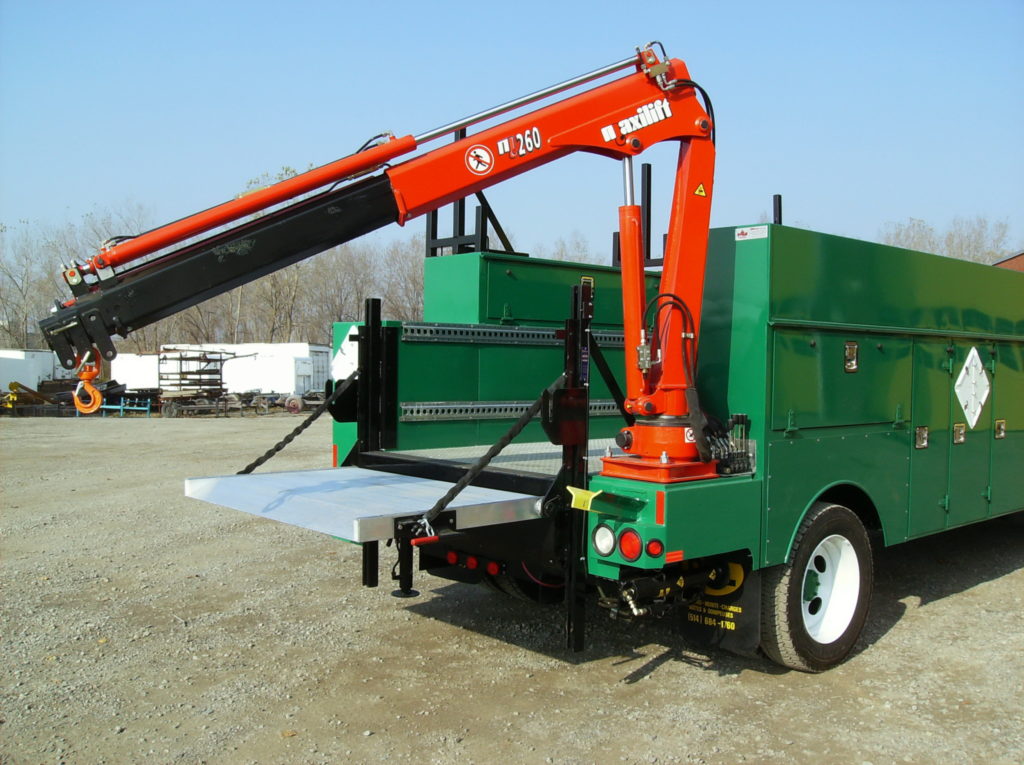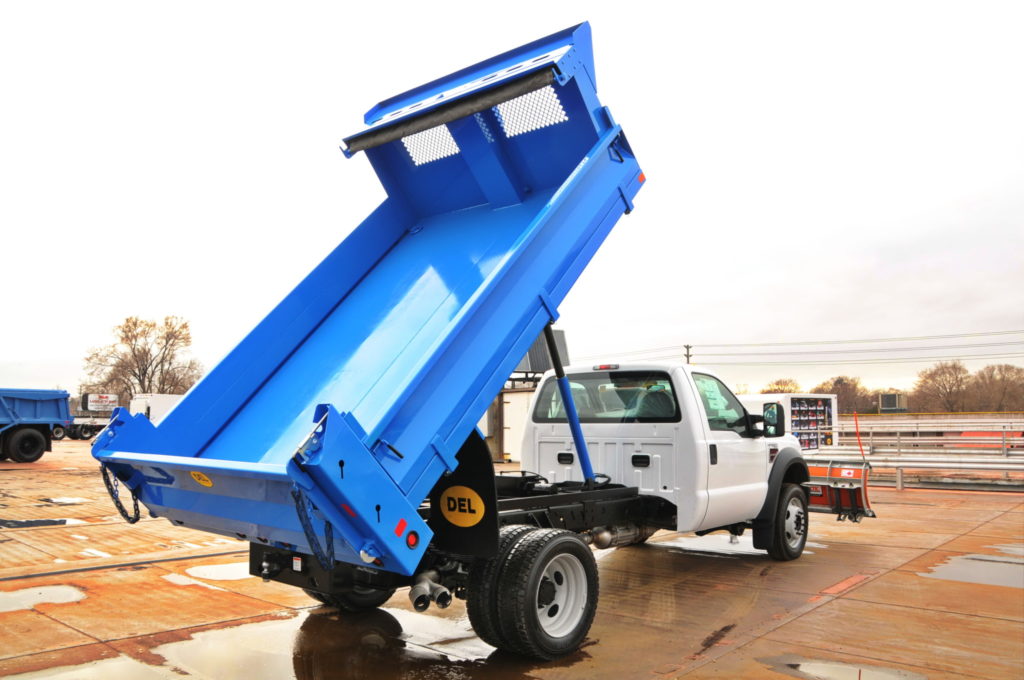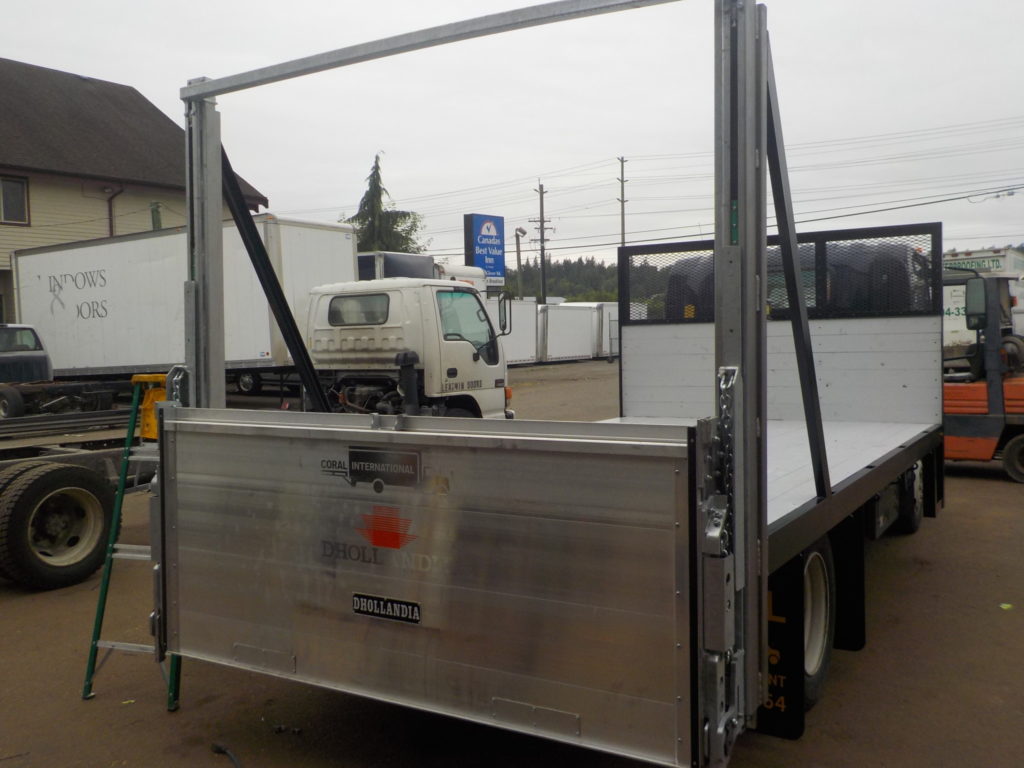Spec’ a work truck that’s ready to work
Not many customers buy a work truck right off the lot. While there are standard spec’s for certain types of medium-duty work trucks, customers generally want some input into what they buy. Gasoline or diesel, single or dual wheels, crew-cab or single — there’s no such thing as a cookie-cutter chassis anymore.
Sure, you can find a few standard configurations in stock somewhere if you need one in a hurry, but for the money you’re spending you’ll want to spec’ exactly what you need.

The medium-duty work truck customer is an interesting critter. They run the gamut from someone wanting to bolt a snowplow to a pickup truck to make a little extra cash during the winter, to small businesses landscapers or plumbing contractors, all they way up to utility companies spec’ing cranes and aerial lifts for field service teams.
There are quite different levels of sophistication in that mix. To those whose core competency is something other than spec’ing trucks, the upfitters are there to help with the finer points of vehicle spec’ing.
“We’re usually the customer’s first point of contact,” says Tyler Moss, vice-president of sales and marketing at Drive Products “We often get requests to build a truck from scratch, so we offer the customer a recommendation for the truck they’ll need based on the vocation. Conversely, we’ll get calls from a truck dealer that carry the customer’s preferred truck brand. Then we work through that dealer to build the truck we think the customer needs.”
Drive Products acquired DEL Equipment operations across Canada on April 1, creating the largest truck upfitting operation in the country, including the equipment at DEL’s manufacturing facility in Newmarket, Ont.
Moss says there are different buying patterns across his customer base, from those that buy on an annual basis with a plan, to the responsive buyer who suddenly needs a truck tomorrow because the old truck just quit.

“For the first type of customer, you can order the exact truck you need. For the other, you may have to work with what’s on the market at that moment,” he says.
Weight is a serious concern among the jobbers, contractors, and landscapers. They want no part of a truck that requires a classified driver’s licence. As you might expect, vehicle weight can influence the material selection for the body. An aluminum dump body will be lighter than a steel body. The difference could tip the truck into a higher weight class.
Many Canadian buyers are turning to aluminum for weight savings and its corrosion resistance as well. On that front, galvanized components are also gaining traction as the winter de-icing chemicals continue to eat away at their assets.
Even something relatively straight forward, like a snow plow, can be a challenge with customers that don’t really understand the vehicle requirement.
“It’s not as simple as it sounds,” cautions Steve Kinnunen, president of SK Power Drive in Sudbury, Ont. “A customer will buy a truck that he or she really likes and come in here asking us to install a big V-blade plow. It might be a 3/4-ton or even a one-ton with a diesel. Then I have to explain to them that the diesel engine makes the front end too heavy for the plow. A gasoline engine would have been fine for the job and we could have installed the heavier plow.”
Cranes and aerial lifts
“Depending on where the crane is mounted, you may need to up the front axle rating if much of the crane weight will sit far forward,” warns Moss. “If you stretch the wheelbase to accommodate a longer deck, it could impact the payload as well as the rear axle rating.”
The installation could also require outriggers to steady the truck when using the lift, and it may also require a transmission-mounted power take-off (PTO). That’s a lot of hardware to fit on a relatively short chassis.
To avoid have to make significant modifications to the chassis, the upfitters work closely with the truck dealers. “They know the market and they know their product,” says Moss. “They will usually have chassis configurations that suit even specialized equipment.”
PTOs are usually not a problem, and with the Allison RDX 2500 automatic transmission being the most popular model in the mid-range weight class, PTO installations (a core competency at Drive Products) are generally pretty clean. However, due to space constraints, hydraulics are sometimes necessary.
“Nobody is happy about higher cost, but sometimes there’s no way around it,” Moss says.

Liftgates
Liftgates come in a wide variety of capacities and styles, but they share a common weakness — the electrical system that deliver the power. If the lift gate is used frequently on multi-stop routes, you may need to spec’ a larger alternator than the stock unit, and equip the truck with additional batteries. You’ll need to make sure there’s room on the chassis for the extra batteries, and the closer they are to the liftgate motor, the better.
“Consider using two isolated six-volt batteries located close to the liftgate rather than a single 12-volt battery,” suggests John Houweling, president of Coral International Truck Equipment in Langley, B.C., a distributor and installer of Dhollandia liftgates. “A pair of six-volt batteries will hold their voltage better than a single 12-volt battery, and It’s common practice in Europe.
“You can run the liftgate batteries right down with no risk to the starting batteries,” he says. “It’s a $2,000 option but very cost effective over the life of the truck. Just ask anyone who has had a battery let them down midway through a route.”
He also suggests keeping the batteries close to the liftgate. Over a long cable run from the alternator to the back of the truck, you’ll lose a volt or two to resistance. That’s not as critical to the charging phase as it is to the running phase. “At 30 feet, you have 11 volts rather than 12 volts going to the electric motor,” Houweling says. “When voltage goes down, amperage goes up. That heats up the motor and wears everything out.”
Electric trucks
Sometime, not too far from now, upfitters will have to learn to deal with battery-electric chassis. In many cases the change in perspective and process won’t require radical re-engineering because the chassis designers are fitting the electric propulsion systems into existing chassis. The frame rails remain, the cab-to-axle measurements will remain the same, and the basic electrical architecture of the truck won’t change.
Chassis weight is bound to change with the addition of several tons of batteries. That could drive a change to lighter materials for bodies such as aluminum, fiberglass or some other composite material. But many of the drive systems on the smaller classes of medium-duty work trucks are already electric-over-hydraulic.
The higher voltage drive systems also open up the possibility of 24- or 48-volt drive systems for certain implements, which are far more efficient than 12-volt systems. Chassis designers and upfitters are looking at those possibilities now in preparation for the day when battery-electric vehicles finally hit the street.
“I saw a lot of electric product at this year’s NTEA show in Indianapolis,” Moss says. “They haven’t really hit the market yet in terms of us having to respond with body solutions. It’s coming, but we haven’t seen it yet. Almost every truck maker has electric product in the pipeline, but we’re still not sure what adjustments we’ll have to make.”
Have your say
This is a moderated forum. Comments will no longer be published unless they are accompanied by a first and last name and a verifiable email address. (Today's Trucking will not publish or share the email address.) Profane language and content deemed to be libelous, racist, or threatening in nature will not be published under any circumstances.
Neat piece. Interesting the way some clients don’t think of the type of tractor first before going to the body builder.
I should show you the oddball spec we have for our private steel hauling fleet.
We look perfectly normal going down the road pulling our 5-axle wagons, albeit with a 186” wheelbase, double frame and related heavy specs.
But that’s because our facility was built for shorter rigs back in the day and we haven’t got any room to lengthen to loading bays.
So we end up with a wild 5th wheel slide that scrunches up the trailer landing gear within a couple inches of the tractor mud flaps.
The problem is that no manufacturer’s legal or engineering teams allow us to make that spec happen at the factory level. Why? Because you can’t turn more than five degrees one way or the other without tangling up the frame rails of tractor and trailer.
So we improvise at the dealer level.
We’ve got three new Mack Anthems coming in soon. In fact we are doing a test fit later today to make sure the changes work before going ahead with the modifications on the other two.
$186,000 each for a short wheelbase day cab. But one helluva spec.
Would be happy to show you at some point. We’re in Toronto.